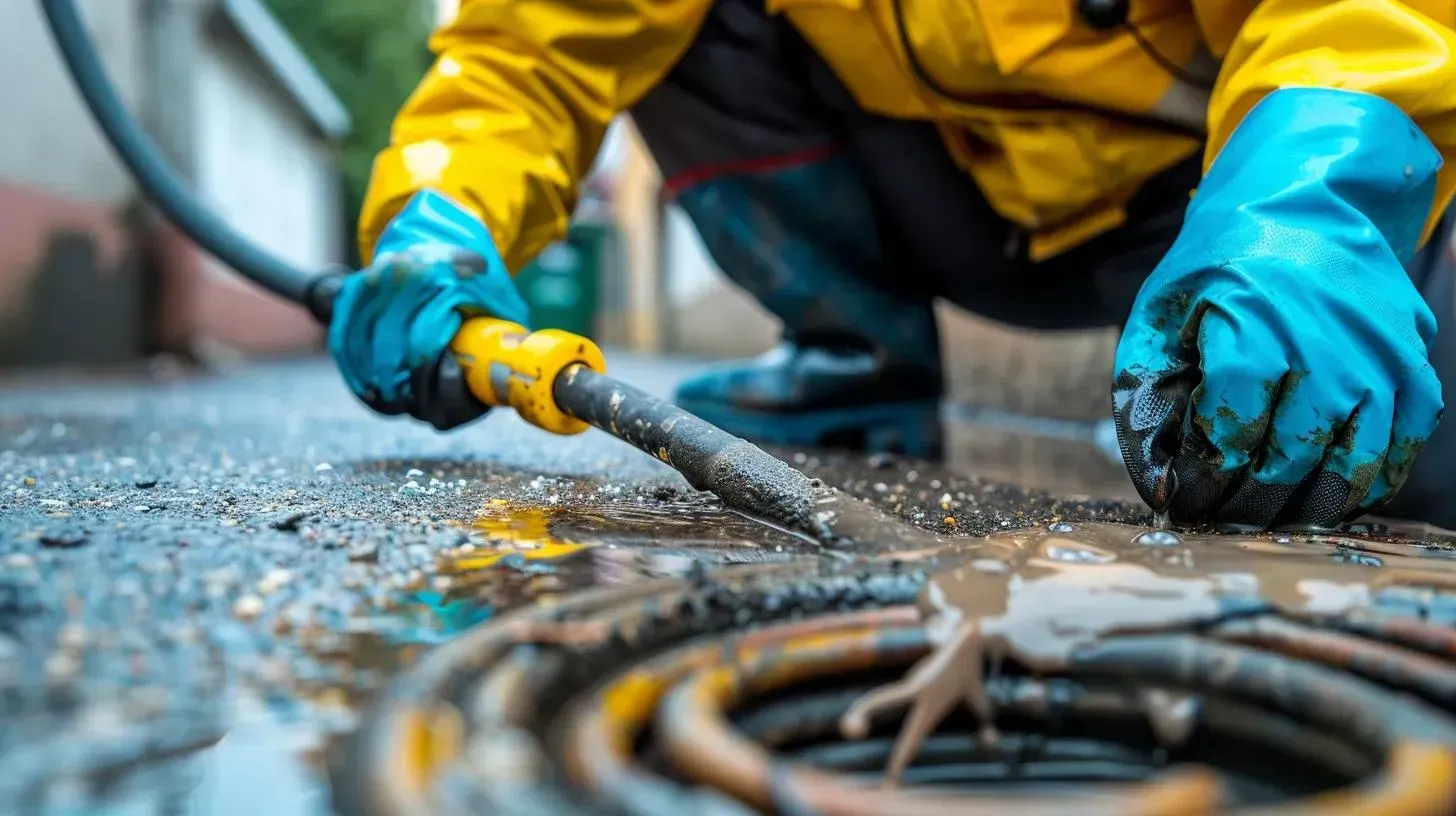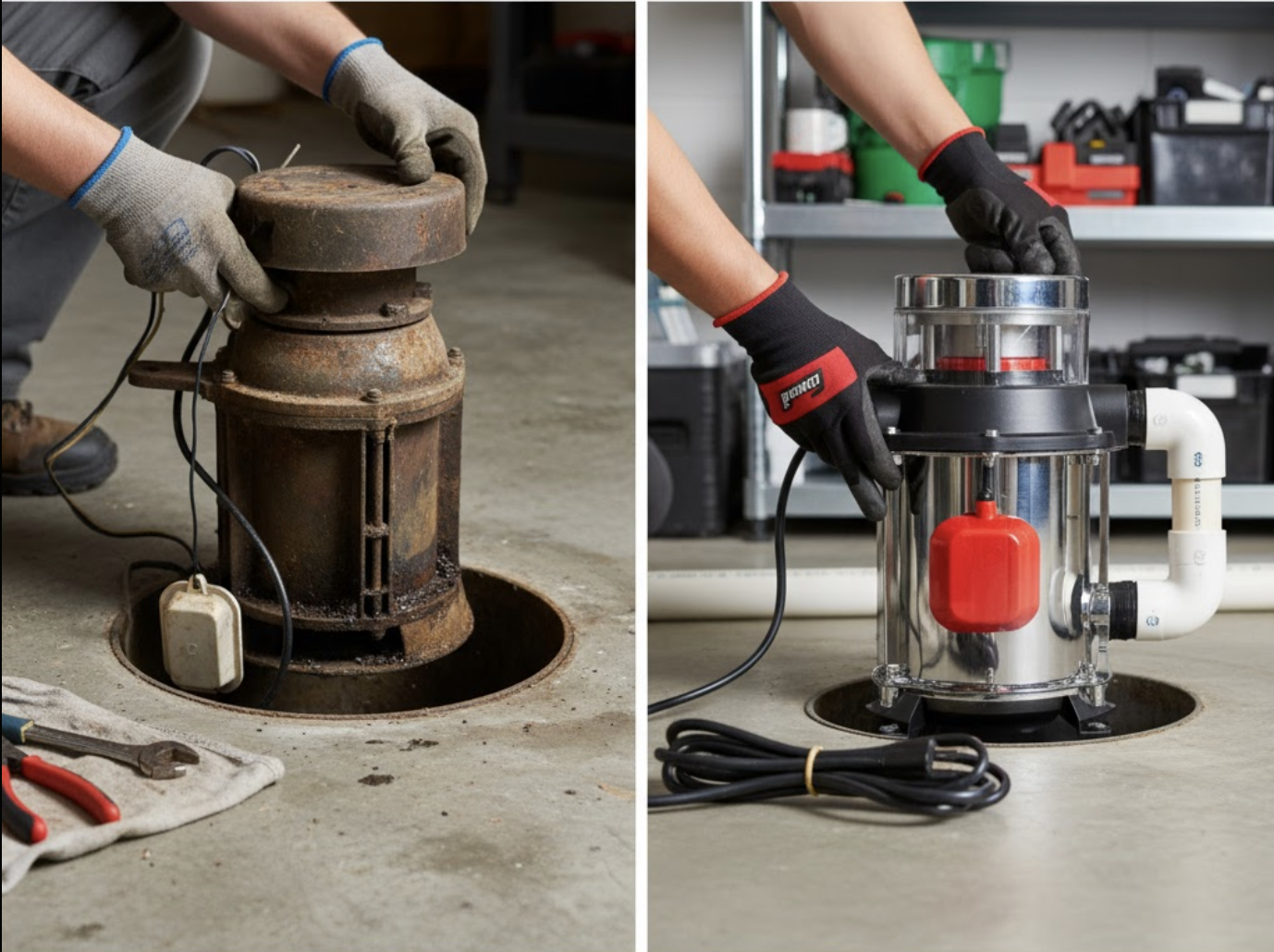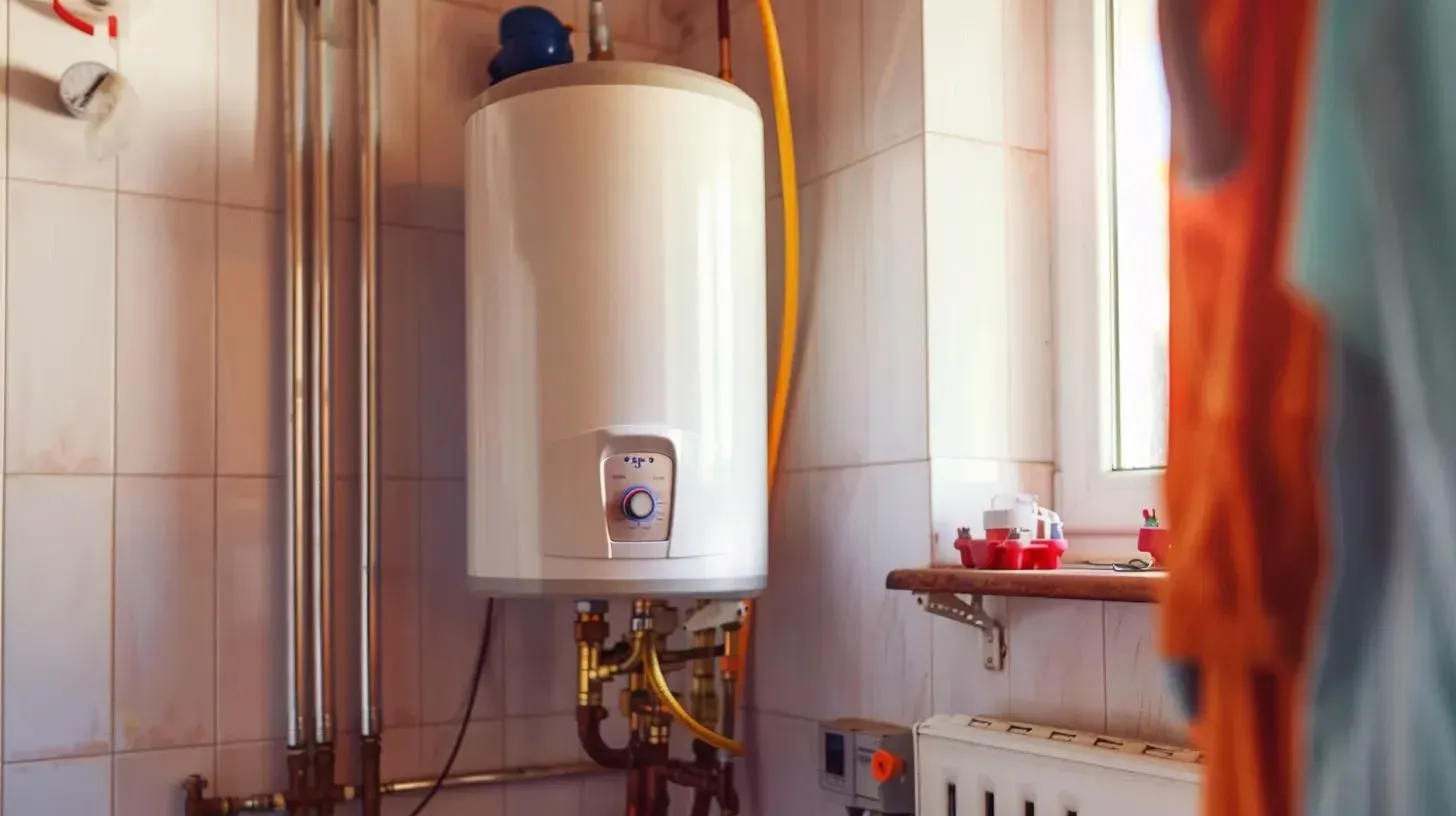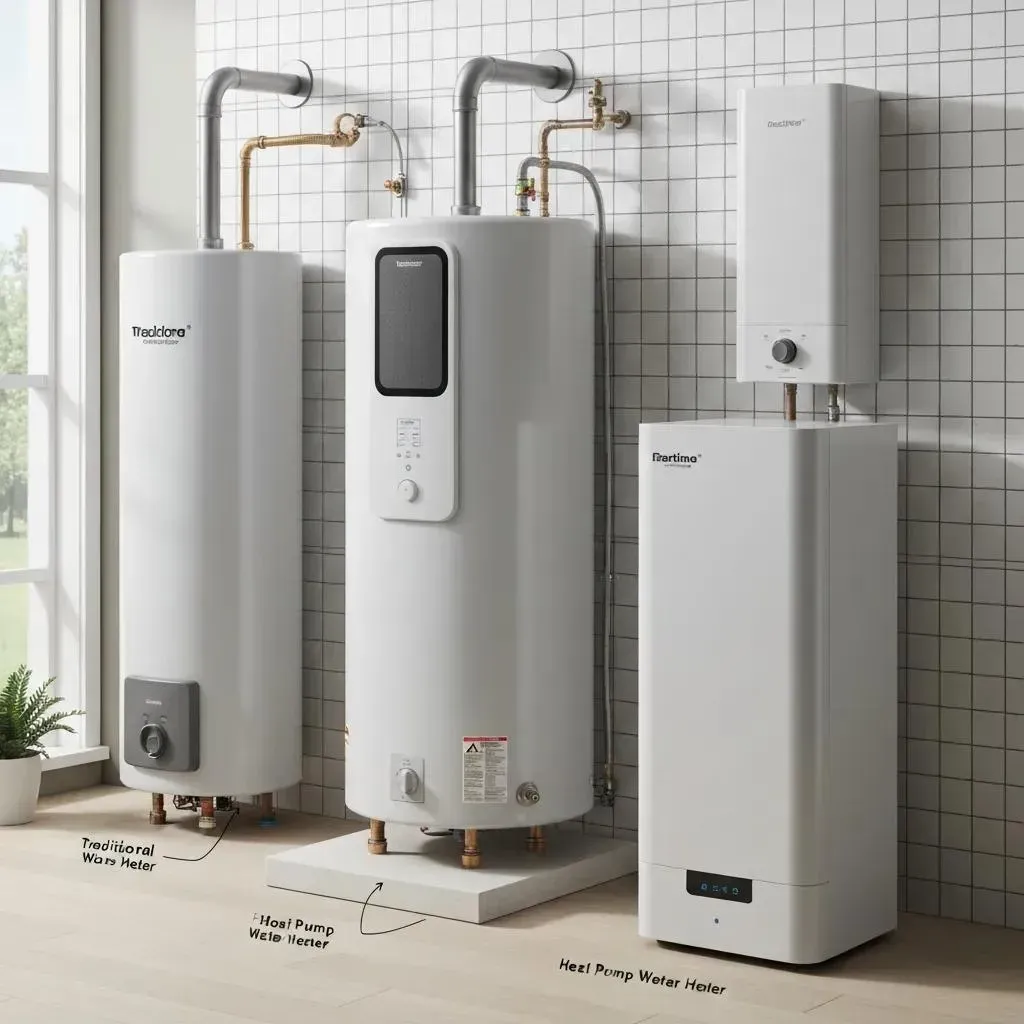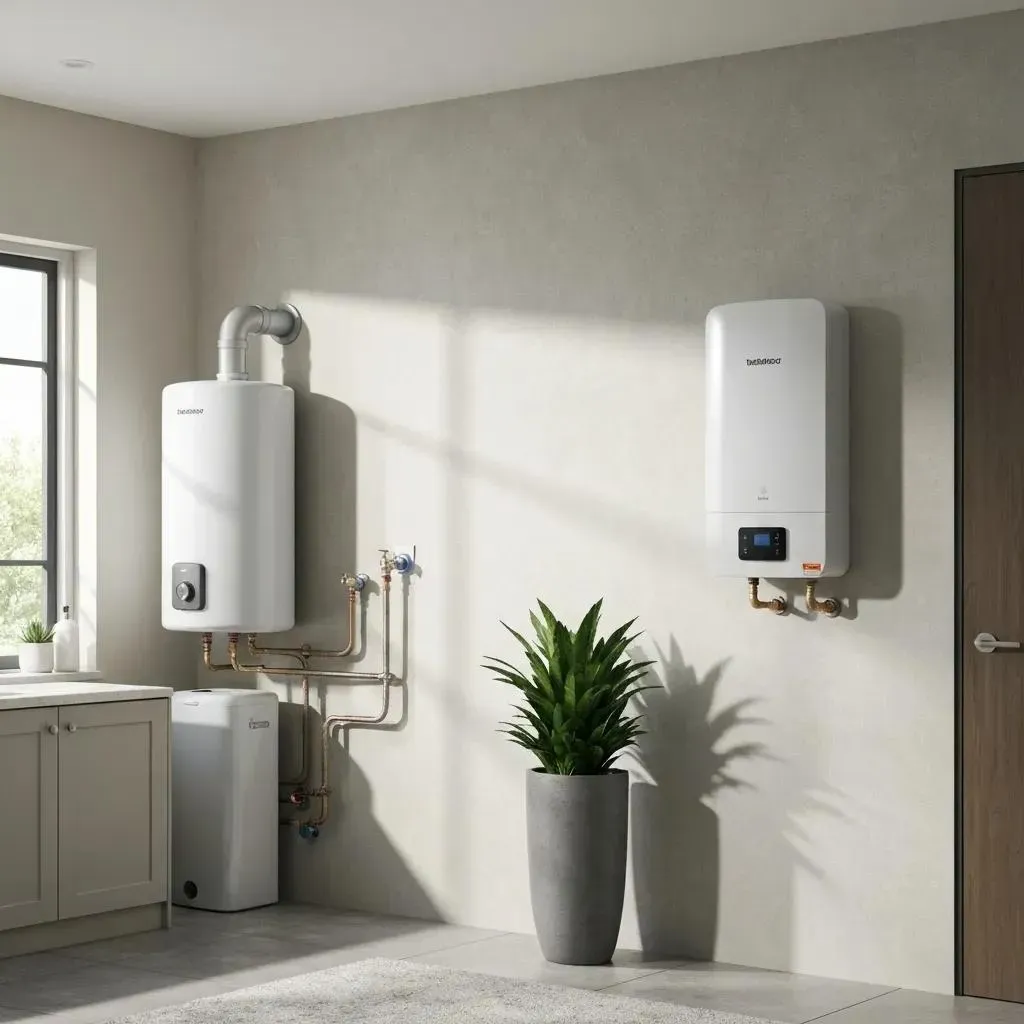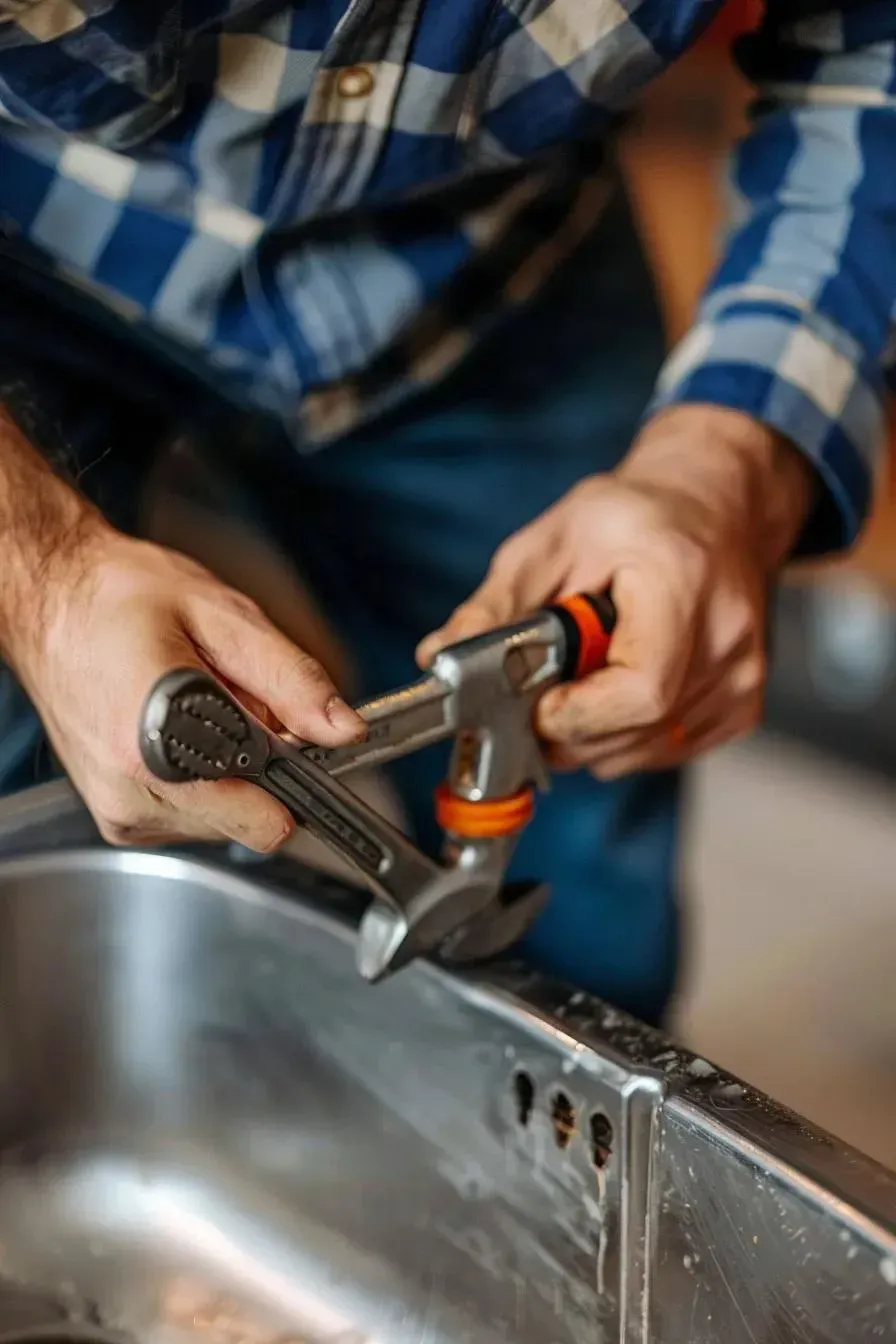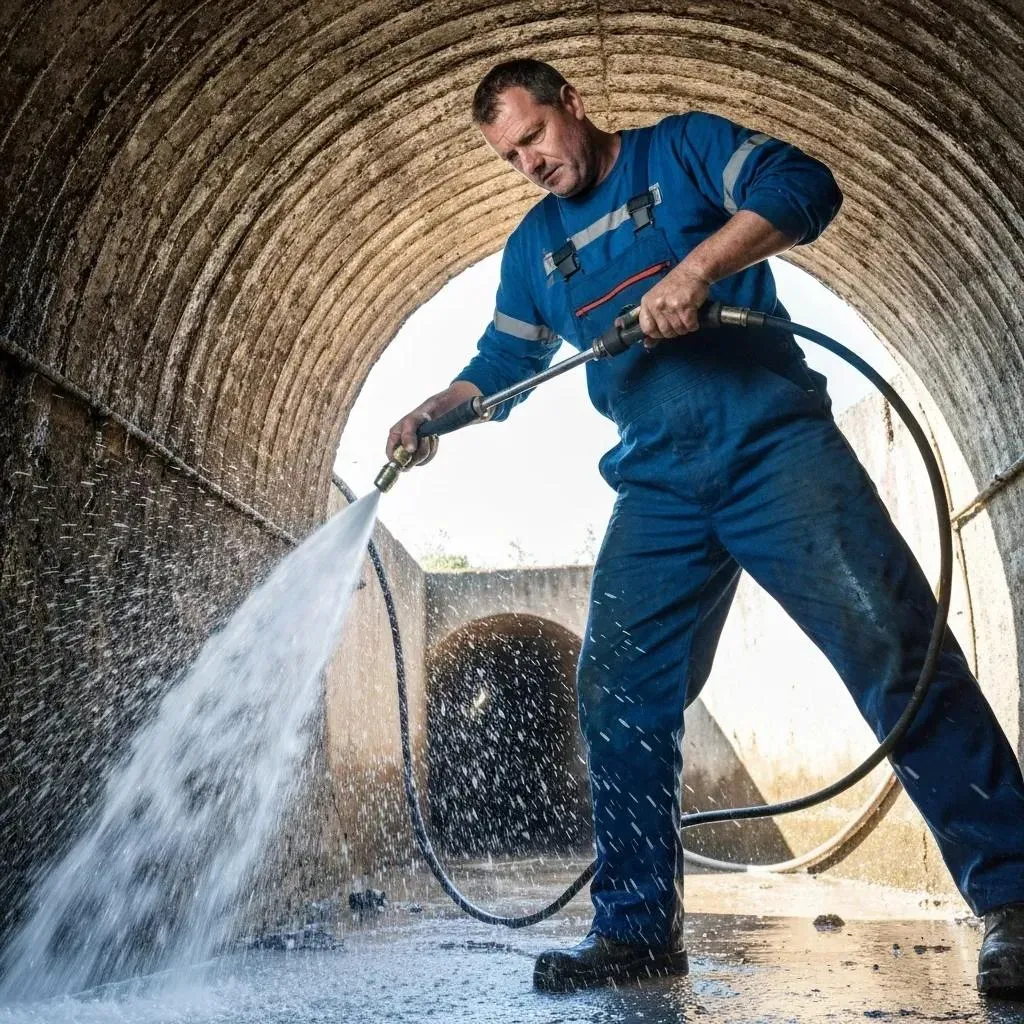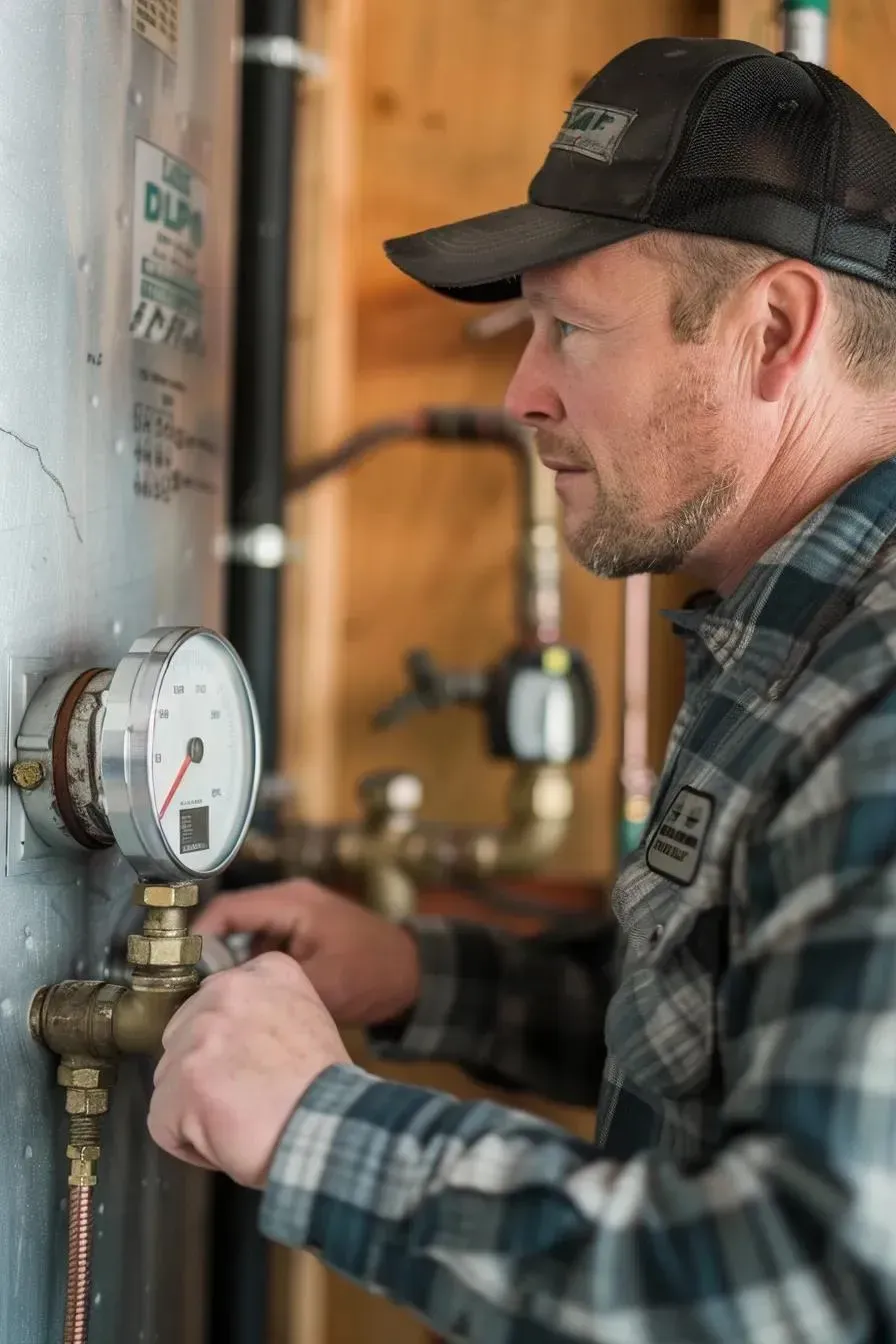Top Water Leak Detection in Denver | Acoustic, Infrared & Dye
Denver's Top Water Leak Detection Methods: Acoustic, Infrared & Dye Tests Explained

Catching hidden water leaks early is key to keeping your Denver home safe, preventing mold, and saving a fortune on repairs. Given Denver's unique climate and soil, precise leak detection is crucial for protecting your foundation and plumbing system. This guide breaks down the three most effective leak detection methods—acoustic, infrared thermal imaging, and dye testing—explaining what each is, how it works, and why it's beneficial. You'll learn when to use each technique, how they stack up in accuracy and invasiveness, and why calling in the pros ensures reliable, non-destructive results.
What Are the Best Leak Detection Methods for Denver Homes?
Denver Metro Area homeowners trust three advanced leak detection methods that deliver accuracy with minimal disruption. Acoustic leak detection uses sound to pinpoint leaks underground, infrared thermal imaging spots temperature differences behind walls and under slabs, and dye testing uses safe tracers to confirm visible leaks. Each method offers a unique way to find water escapes, cutting down on repair time and protecting your home's value. Together, they provide a complete solution for slab, underground, and fixture leaks in homes and businesses.
How Does Acoustic Leak Detection Find Hidden Water Leaks?

Acoustic leak detection listens for the sound of pressurized water escaping pipes using special listening devices and correlators, allowing us to pinpoint leaks without digging.
- Tiny microphones are placed on pipes to pick up leak sounds.
- Leak correlators analyze sound differences between two sensors.
- Smart software filters out background noise to isolate leak frequencies.
Acoustic signal based water leakage detection system using hybrid machine learning model
This study explores a cutting-edge technique for finding pipeline leaks using acoustic signals. The sensor captures acoustic signals over time, and the time-domain signal is analyzed using FFT for better identification.
This research backs up the use of acoustic leak detection, a key method we discuss.
Acoustic methods help us find leaks early, so we can fix them fast.
Let's move on to heat-based detection with infrared thermal imaging techniques.
What Is Infrared Thermal Imaging and How Does It Detect Leaks?

Infrared thermal imaging uses high-tech thermal cameras to spot temperature differences caused by moisture behind walls, floors, or ceilings, creating visual heat maps to pinpoint leaks.
- Thermal imagers capture infrared energy.
- Software turns temperature data into easy-to-read color images.
- Cooler spots usually mean moisture is present because of water’s cooling effect as it evaporates.
Experimental Study on Leak Detection of Beverage Using Infrared Thermal Camera
This study used an infrared thermal camera to track hot and cold beverage leaks in an insulated food delivery box. The findings confirm that infrared technology is an effective way to detect water leaks.
This supports using infrared technology for leak detection, just like we explain in this article.
Infrared scanning makes inspections faster and more accurate without any damage. Next, dye tests offer a clear, visual way to confirm leaks.
When and How Is a Dye Test Used for Plumbing Leak Detection?
A dye test involves adding a safe, colored tracer fluid to toilets, drains, or accessible pipes to visually track where leaks are coming from, especially when other methods aren't practical.
- Add the dye to the toilet or drain line.
- Run water through the plumbing to move the dye.
- Look for colored water around suspected leak areas or where water exits.
Identifying leakage pathway with a penetrant dye gross leak test
The fluorescent dye penetrant test helps identify leaks caused by packaging flaws or assembly issues, like cracks or gaps in the package that can lead to problems from moisture exposure.
This confirms that dye testing is a reliable method for finding leaks, as we cover here.
Dye testing provides clear visual proof of leaks at a low cost. Let’s compare these methods to see their strengths.
How Do These Methods Compare in Accuracy and Non-Invasiveness?
Here’s a look at how acoustic, infrared, and dye test methods compare in terms of accuracy and impact on your property:
| Detection Method | Accuracy Level | Invasiveness |
|---|---|---|
| Acoustic Leak Detection | High | Non-destructive |
| Infrared Thermal Imaging | Medium–High | Completely non-invasive |
| Dye Test | Medium | Low (only needs visual access) |
Acoustic detection is the most precise, while infrared scanning is excellent for non-destructive, broad checks, and dye tests offer simple visual confirmation. Knowing these differences helps you pick the best approach for any situation.
Why Choose Professional Acoustic Leak Detection Plumbing Services in Denver?
Professional acoustic leak detection services in Denver use licensed plumber expertise and advanced listening gear to find leaks under concrete slabs, behind walls, and in underground pipes with minimal disruption. This non-destructive method helps us plan repairs better and act fast, cutting down on costs and preventing structural damage. Working with trained technicians means you get accurate diagnoses and expert advice to fix leaks right the first time.
What Equipment Do Plumbers Use for Acoustic Leak Detection?
Expert plumbers use precision tools like ground microphones, pipe-mounted accelerometers, and correlator units with analysis software to capture and interpret the sounds leaks make.
- Ground microphones boost the sound of leaks underground.
- Accelerometers detect vibrations along the pipes.
- Correlators use data from two sensors to pinpoint the leak's location.
This combination of equipment accurately maps out leaks, guiding us to the exact spot for repairs.
What Are the Benefits of Acoustic Leak Detection for Homeowners?
Acoustic leak detection offers benefits like finding leaks early, minimizing the need for digging, and providing cost-effective diagnostics that protect your landscaping and finishes.
- Early Detection stops mold and water damage before they start.
- Property Preservation means no disruptive digging.
- Precision Location cuts down on labor and material costs.
These advantages lead to quicker repairs and help maintain your home's value.
Which Leak Types Are Best Detected by Acoustic Methods?
Acoustic technology is fantastic for finding leaks in pressurized systems under slabs, underground service lines, and pipes hidden within walls where you can't see them.
- Slab leaks in concrete foundations
- Underground water lines in your yard
- Copper or PVC pipes inside walls
Pinpointing these hidden leaks reduces the risk of structural damage and water waste.
How Does Acoustic Leak Detection Minimize Property Damage?
By using sound analysis to find where leaks start, our plumbing teams can dig only at the exact repair spot, leaving surrounding areas untouched and saving you money on restoration.
This precise approach naturally leads into using heat-based infrared inspection for broader surface checks.
How Does Infrared Leak Detection Service Work for Water Leak Problems?
Infrared leak detection services use professional thermal imaging cameras to scan walls, floors, and ceilings for subtle temperature changes that indicate moisture. Our certified technicians interpret these thermal patterns, compare them with building plans, and suggest the best repair strategies. This non-invasive method speeds up leak resolution for homes and businesses throughout Denver.
What Technology Powers Infrared Thermal Imaging for Leak Detection?
Infrared leak inspection relies on advanced thermal sensors and image-processing software built into handheld or drone cameras to capture precise temperature data in high detail.
- Uncooled microbolometer sensors detect infrared energy.
- Thermal overlay software highlights areas with anomalies.
- Real-time reporting tools document findings to help plan repairs.
These systems allow us to scan large areas quickly without needing to tear anything apart.
How Does Infrared Detect Hidden Moisture and Temperature Anomalies?
Thermal imaging spots cooler areas where water is evaporating and absorbing heat, and warmer spots where steam might be escaping. This creates distinct color contrasts that show us where leaks are. This helps us see leaks better and guides our technicians to the most important areas to inspect.
What Are the Advantages of Infrared Leak Detection in Denver?
Infrared scanning speeds up leak detection, cuts down inspection time, and doesn't require cutting into walls or floors, meaning faster service and less disruption for homeowners.
- Speed: We can scan entire areas in minutes.
- Accuracy: We can pinpoint leaks within inches.
- Non-Invasive: No holes or walls need to be opened.
These benefits make scheduling repairs easier and protect your living spaces.
Can Infrared Leak Detection Identify Slab and Underground Leaks?
Yes, infrared cameras can detect surface temperature changes over concrete slabs and soil, revealing underground leaks by showing cooler spots above where water is flowing, even outdoors.
Detection of Water Leakage in Buried Pipes Using Infrared Technology
This paper explores how low and high-resolution infrared systems can find water leaks in buried pipes. The results show that infrared technology is effective for this purpose.
This research confirms that infrared thermal imaging is a great tool for detecting leaks, as we explain here.
This capability works well with dye testing for final visual confirmation.
What Is the Process and Effectiveness of Dye Testing for Plumbing Leaks?
Dye testing is a simple method where we add a colored tracer to plumbing fixtures to visually follow leak paths in toilets, sinks, and drains, especially when acoustic or thermal methods aren't conclusive. It's effective for small leaks in accessible areas and works well alongside electronic detection methods.
How Is a Dye Test Performed on Toilets and Drains?
To perform a dye test on household fixtures, we add a few drops of safe dye into a toilet tank or drain. Then, we let the dye travel through the system and check surrounding areas and where water exits for any color, indicating a leak.
- Turn off nearby water sources if necessary.
- Add the dye into the fixture's water reservoir.
- Watch for traces of dyed water in areas where leaks might be.
This process visually confirms if a leak is present and helps us focus on the right areas for repair.
When Is Dye Testing the Best Choice for Leak Detection?
Dye tests are perfect when plumbing is easy to access, like checking toilet flanges, sink drains, and vertical pipes. They're also great when electronic methods can't tell the difference between a leak and normal moisture. This focused approach makes dye testing a quick first step for investigating leaks in specific spots.
What Are the Limitations and Benefits of Dye Tests?
Homeowners appreciate dye tests because they are inexpensive, easy to use, and provide clear visual results. However, they require direct access and can't find leaks deep in slabs or underground. The table below summarizes these points:
| Attribute | Limitation | Benefit |
|---|---|---|
| Accessibility | Needs direct access to the fixture | Simple to perform with basic tools |
| Coverage | Can't detect deep slab or wall leaks | Offers immediate visual proof |
| Cost | Low cost per test | Very budget-friendly diagnostic tool |
Dye testing’s clear evidence complements electronic diagnostics by confirming or ruling out leaks in visible areas.
How Does Dye Testing Complement Acoustic and Infrared Methods?
Dye testing provides visual confirmation for leaks that acoustic listening or thermal imaging might suggest. This layered diagnostic approach increases confidence in repair plans and prevents unnecessary digging.
How Can Early Leak Detection Prevent Water Damage and Save Costs?
Catching hidden leaks early stops water waste, prevents mold growth, and cuts down on expensive structural repairs by addressing problems before they get worse. Proactive detection keeps your home in good shape, reduces insurance claims, and saves you money on utilities and maintenance in the long run.
What Are the Common Signs of Hidden Water Leaks in Denver Homes?
Denver homeowners should watch for unusually high water bills, unexplained stains on walls or ceilings, musty smells in closed-off areas, and buckling floors or baseboards. These signs are important clues that prompt leak detection to minimize damage quickly.
How Do Acoustic, Infrared, and Dye Tests Help Avoid Extensive Repairs?
Each detection method helps us avoid unnecessary demolition by pinpointing leaks precisely: acoustic analysis finds underground issues, infrared imaging highlights wet areas, and dye tests confirm leaks in visible spots. Together, they give us the clear information needed for targeted repairs.
What Are the Financial Savings from Timely Leak Detection?
| Cost Factor | Without Early Detection | With Early Detection |
|---|---|---|
| Water Bill Impact | Can increase by up to 10% monthly | Stays at normal levels |
| Mold Remediation | $1,500–$3,000 per incident | Completely avoided |
| Structural Repairs | $5,000–$20,000 for a slab leak | Limited to the specific repair area |
Preventive diagnostics help you budget better and avoid unexpected renovation expenses.
How Does Non-Invasive Leak Detection Protect Property Value?
Non-invasive techniques keep finishes, landscaping, and structural elements intact. This means repairs don't hurt your home's appearance or resale value, and buyers can trust the transparent diagnostics.
When Should You Call for Emergency Leak Repair Services in Denver?
You need emergency repairs right away when leaks threaten your home's structure, flood living areas, or shut down essential plumbing systems. Our professional 24/7 response ensures quick diagnostics and repairs to protect your property and everyone in it.
How Does 24/7 Emergency Leak Repair Work with Leak Detection?
Emergency plumbing teams combine acoustic and infrared detection tools with fast response plans. We arrive on-site anytime, diagnose the problem immediately, and isolate leak points to start repairs without delay.
What Types of Leaks Require Immediate Professional Attention?
Burst pipes, active slab leaks under foundations, broken sewer lines, and major issues with the water meter all need urgent attention to prevent flooding, structural damage, and health risks from contaminated water.
How Does Leak Detection Technology Support Emergency Repairs?
Advanced detection technology helps us find leaks faster, allowing emergency crews to focus digging or pipe replacements precisely. This minimizes downtime and reduces further water loss during critical response periods.
How Can Homeowners Prepare for Emergency Leak Situations?
Homeowners should know where their main water shut-off valve is, keep suspected leak areas clear, have plumbing layouts handy, and keep our contact information readily available for quick service when emergencies strike.
What Are the Costs and Pricing Factors for Leak Detection Services in Denver?
Leak detection pricing varies depending on how complex the method is, the size of your property, and the equipment needed. However, we offer clear, upfront pricing so you know exactly what to expect and avoid hidden fees.
How Does Upfront Pricing Work for Acoustic, Infrared, and Dye Tests?
We provide flat-rate packages or detailed time-and-materials estimates. These clearly outline the inspection scope, the methods we'll use, and any follow-up diagnostics, ensuring you approve all costs before we begin.
What Influences the Cost of Leak Detection in Residential and Commercial Properties?
Key factors affecting cost include the square footage we need to inspect, the number of fixtures we check, how deep underground pipes are, any difficult-to-access areas, and if it's an emergency call. These all determine the time and equipment required.
Are There Cost Benefits to Choosing Non-Invasive Leak Detection?
Non-invasive methods save money by avoiding extensive demolition. This cuts down on labor and materials for fixing walls, repairing landscaping, and refinishing surfaces, leading to lower overall repair costs.
How to Schedule a Leak Detection Service with Accountable Home Services?
To schedule a leak detection service with honest upfront pricing and expert work, visit 24/7 Denver Plumbing with Accountable Home Services or give our team a call anytime for fast, dependable appointments.
Thorough leak detection protects Denver homes by finding problems before they become major issues. By combining acoustic, infrared, and dye testing, we offer a powerful diagnostic approach that improves repair accuracy, minimizes disruption, and prevents costly damage. Contact our licensed technicians today to safeguard your property and enjoy the peace of mind that comes with expert leak detection.

